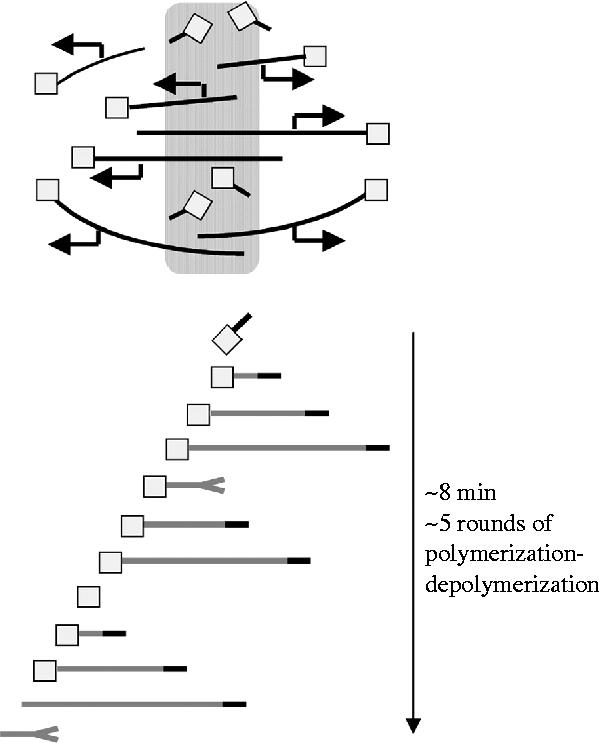Figure 5.

Model for dynamic organization of extract spindles. This model, currently under development by Kendra Burbank, Aaron Groen and Tim Mitchison, seeks a quantitative explanation of metaphase spindle dynamics, emphasizing chromatin-driven microtubule nucleation and dynamic instability of plus ends. The upper panel shows an overview of steady-state organization, the lower panel shows the proposed life history of a single microtubule. Microtubules (grey lines) are nucleated at chromatin by complexes that probably include gamma-tubulin complex and TPX2 (squares). These complexes also cap minus ends. Plus ends grow out (black tip) and shrink back (split tip) by dynamic instability. The capping complex ‘reflects’ shrinking plus ends, causing them to regrow. Minus ends, stabilized in this manner, move towards the pole, driven by the flux engine. At some location the cap is lost, minus ends loose their reflecting property and the next depolymerization event leads to loss of the microtubule.
